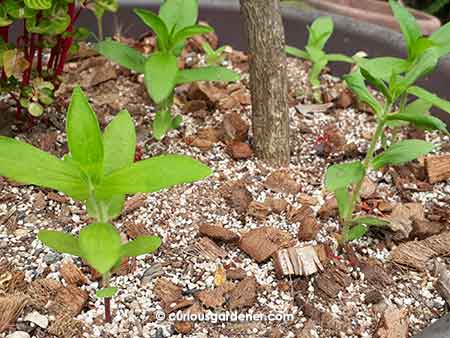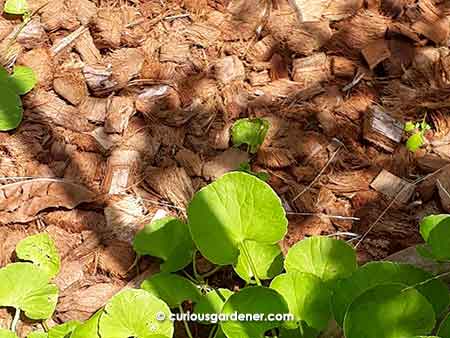Our regular year-end rainy season seems to have ended, and the hot, dry period is about to hit us. It will get more pronounced in the next couple of months when the winds carry less and less moisture, and I’m already getting worried because I see how quickly the potted plants are drying out.
It’s not just solar heat that will have this effect; a combination of wind and warm air will extract moisture most effectively. So this is when I usually start turning my attention to things like self-watering pots and heavy mulching. Taking measures like these means I don’t have to be overly anxious if I’ve forgotten to water the plants. It also means that we save water as well.
Lately I’ve begun experimenting with coconut chips. These pieces of coconut husk act as organic sponges. My buddy Alexius uses them for his garden paths. Not only do they suppress weeds, they soak up and hold moisture when it rains, and over time will decompose and provide nutrients to the plants. I’ve been mixing them into the soil of my potted plants to help with water retention, and am still working out the ratio for that. Recently, when I transplanted some young plants into a mixed planting in a large pot, I pushed in a large piece of coconut chip below each plant. I figured the chips would help to keep the roots hydrated, as well as feed the plants as they composted over time. Well, from the way the plants are growing now, I’d say it has worked!

Healthy young plants that were transplanted with a big piece of coco chip below the roots to act as a “sponge”.
Another way I use the coco chips is putting a layer at the bottom of potted plants to act as a barrier to keep the soil from escaping from the bottom of the pots. They also keep the moisture in, but I’ve found that this attracts ants to start nesting in the pots. I instinctively dislike seeing ants on my plants because they usually signify a pest problem, but I know that they also serve a purpose in the garden. However, the pest issue overshadows all else for me.
The final way I use the coco chips is as a layer of mulch. The only problem with this is that the chips are lightweight when dry, and will be blown away by wind, or will float to one side until they absorb water. So, you have to lay a decently thick layer and expect to lose some of it. My humble opinion is that they work best when in the soil.
© 2018 curiousgardener.com All rights reserved.

